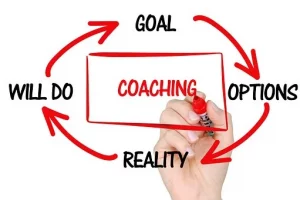
Communication is our essential tool for passing messages, discussing things and ensuring others understand. But communication isn’t easy. There are so many things to consider, so many things to look at. SO let’s look at a few basics
Communication Links

You can see that there are many lines of communication within a group. Why is this important? Well, if there is a breakdown within any of these links, you get a problem communicating within the entire team,
Counting the communicating links manually you will realize that in this example there are 10 links. However if you have 4 people you get 6 links and if you have 6 people, then you get 15 links. You can see the bigger the team the faster the number of links goes up.
Here is a simple formula for calculating the number of links: n (n – 1) /2
I think you can also see that the more links you have the more potential communication breakdowns you can have. This means the more complex communication gets, That is one of the reasons why Agile teams are usually 5 people, absolute tops 7 people.
Communication Model

What you say does not always reach the way you send it. There is a lot of things in between that can distort your message. Have you ever played the game of “Chinese Whispers”? Where one child whispers something into someone’s ear and that child passes the message on? By the time it reaches the last, whatever was said is totally distorted. Some of the things that influence this are:
- Accent
- Ability to speak & understand the language used
- Local use of the language
- Cultural understanding
What to do?

So now that we know that there are many ways to distort the message you are trying to send out, what can we do? Here are my go to tips:
- Keep your team small
- Spend time on team building – get to know each other and learn your individual cultural understanding
- Pass important messages on yourself and ask questions to see if it was fully understood
- Encourage questions
- Make decisions together
- Allow everyone to have an input
- Create an atmosphere where people feel free and save to open up
What else to watch out for
The biggest clues will come from the non-verbal communication.
- Watch the body language, it will give you hints on who is understanding and who is not. It will also show you who is not in agreement or not comfortable with what was discussed / agreed.
- Observe your team closely. Are there any who have disconnected / disengaged? Is there anyone who is suddenly gone quiet? Is there anyone avoiding eye contact?
- Look out for facial expressions, even if they are hidden quickly
These are all signs for people who are either disagreeing, or not happy with what is being discussed. You are at acute danger to loose their buy-in and you won’t get their best performance.
How to handle these
First of all you encourage people to comment and give their views, even if they disagree. Ask for concerns. If you see one of the people who disengaged is not speaking up, then try and speak to them separately. This needs to be done with utmost sensitivity. If the other person feels confronted, they will clam up more. I usually do not talk to them directly after the meeting, but maybe the next day, unless of course this is an emergency and we need everyone’s buy-in immediately.
Go and have a cup of tea with that person, or meet them at the water dispenser. chat about other things first and then ask gently how they feel about the issue at hand and how they would suggest it is handled. Make sure you listen actively and remove your own inner filters and biases, so that you really hear and understand what they are saying.
They may be seeing something no one else does and this can be a great opportunity for innovation!
Let’s all learn to listen actively and engage every team member individually!
















